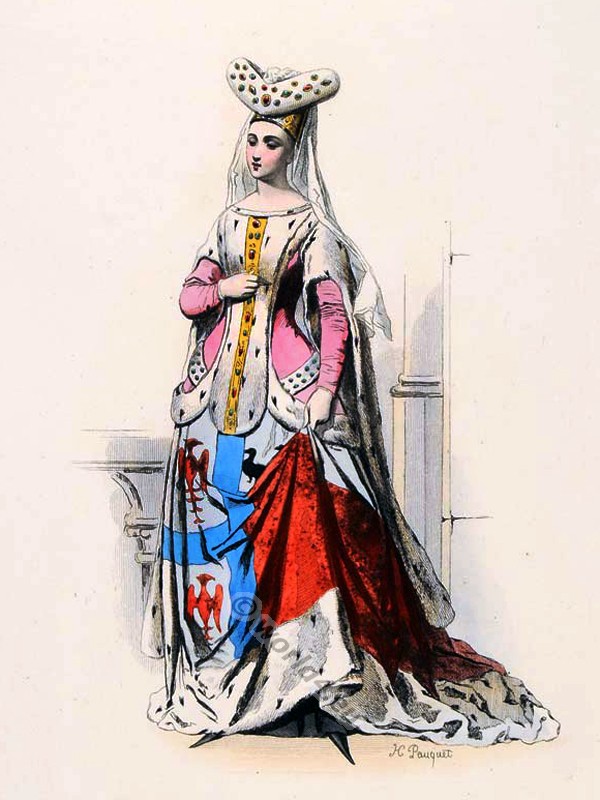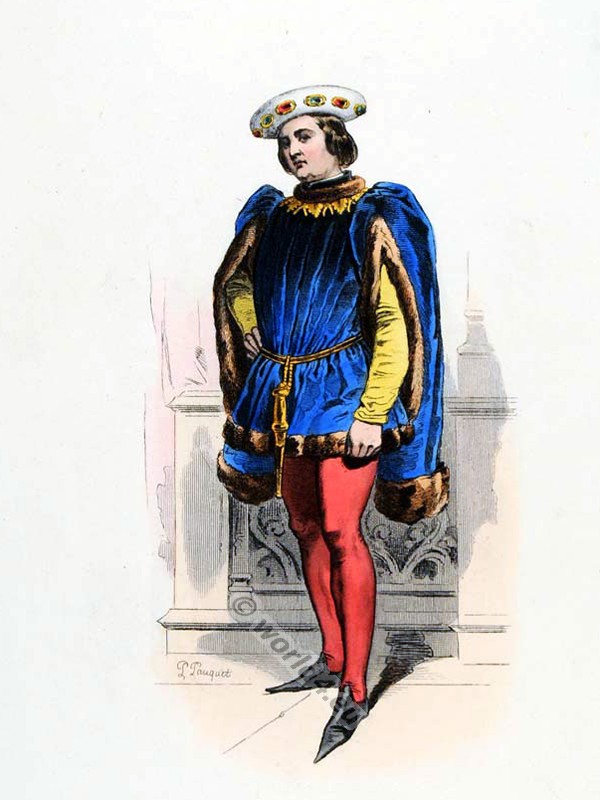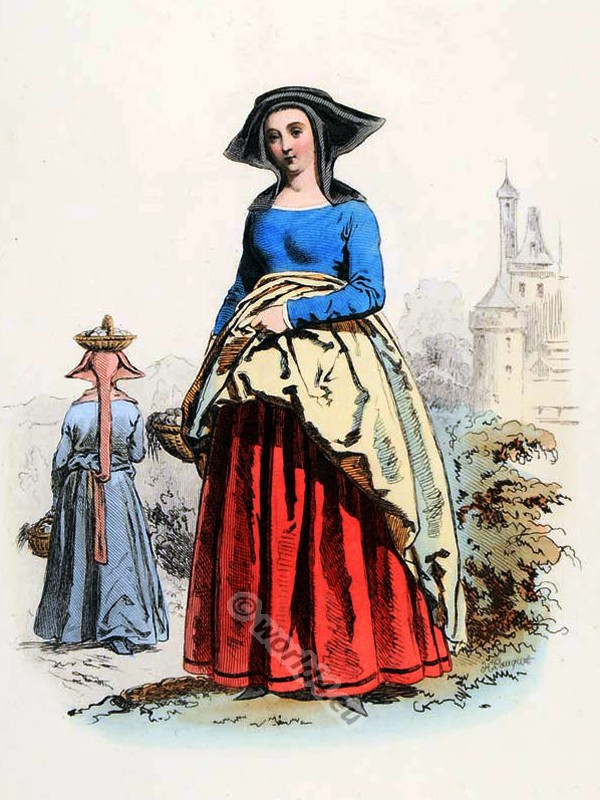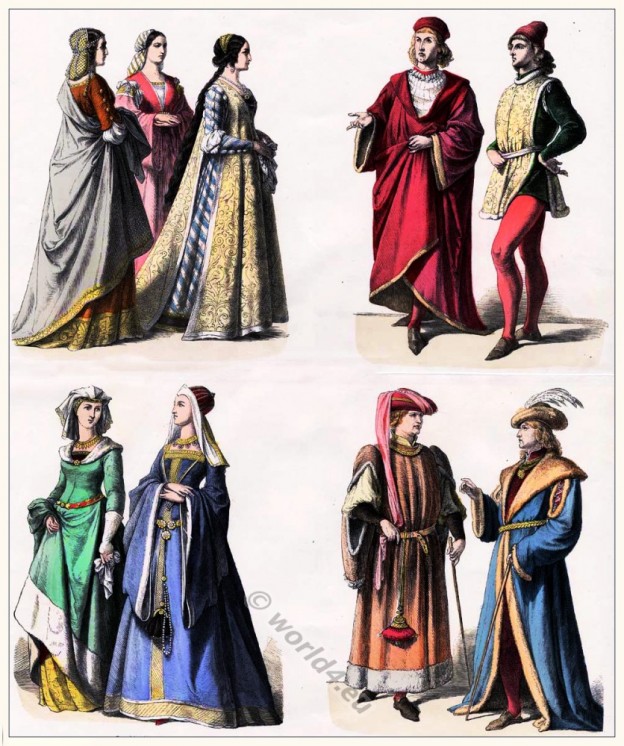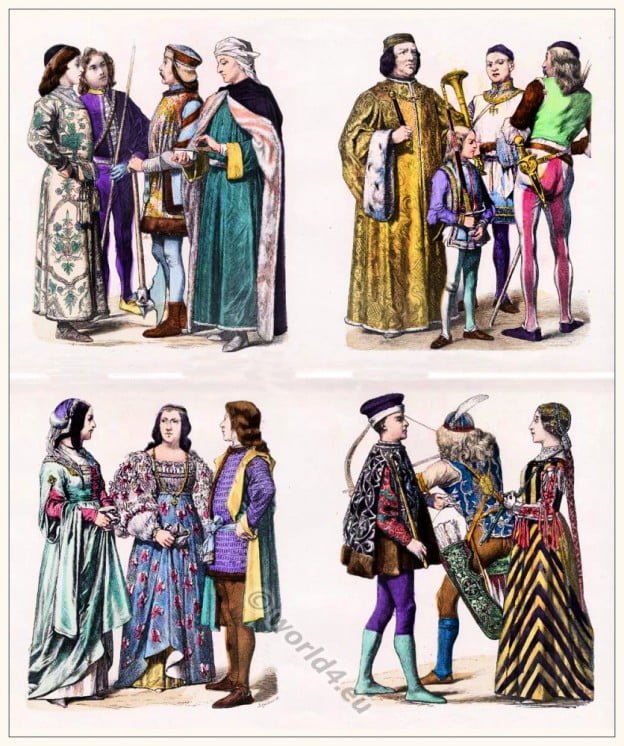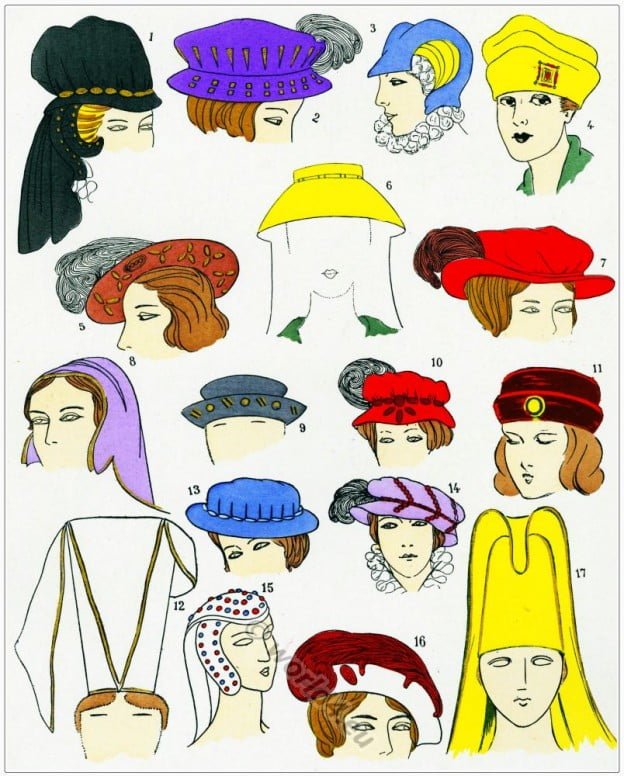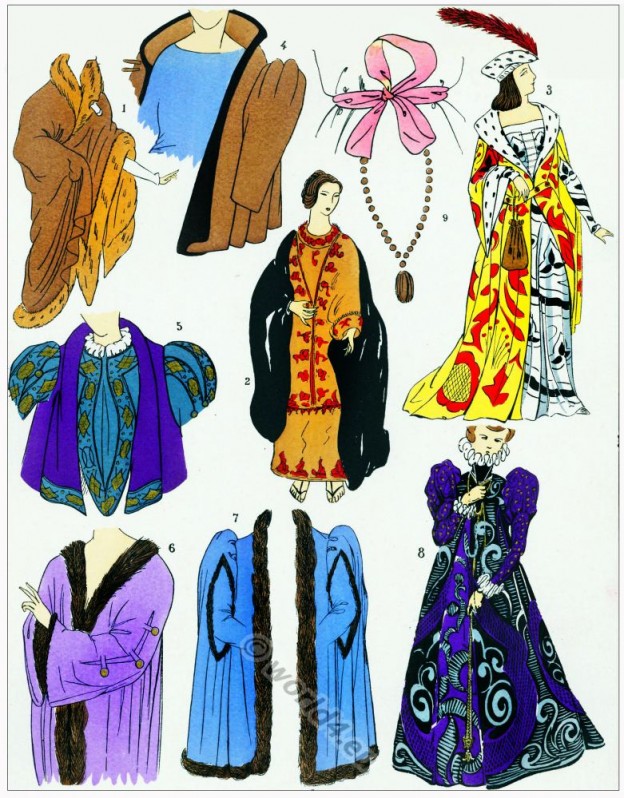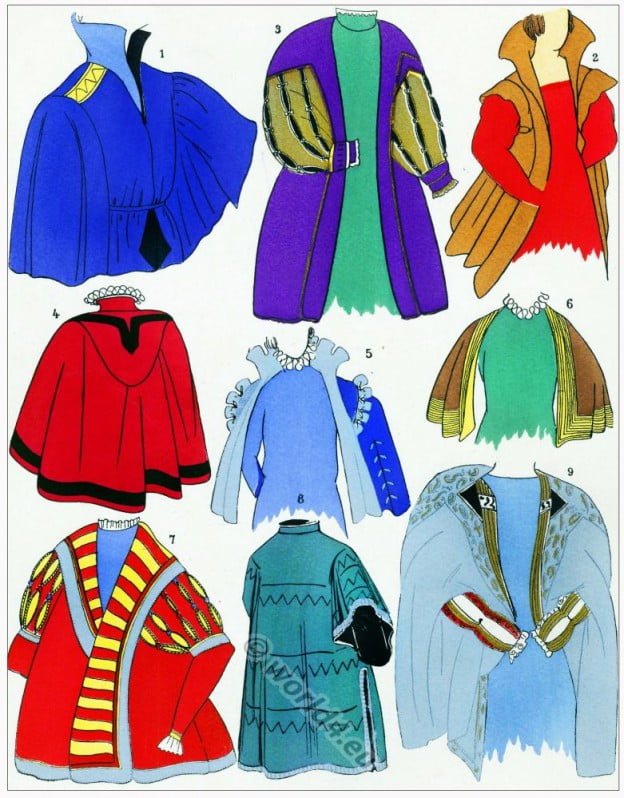Jacqueline de la Grange, Femme De Jean de Montagu, after Gaignières, 1408
Category: 15th Century
Costumes and Fashion during the 15th century. Fashion of the late Gothic, Italian Renaissance.
Heyday of the Burgundian fashion.
German medieval fashion history in the 15th century.
The Tappert, points and scallops…. Every one dressed as he pleased. Some wore coats made of two kinds of material.
Jean de Montaigne, Reign of Charles VI. 1408
Michel Eyquem de Montaigne (Latin Michael Montanus; 1533-1592) was a jurist, sceptic and philosopher, humanist and founder of essay writing.
Women from around Paris, reign of Charles VII., 1443.
Femmes des Environs de Paris, Règne De Charles VII, d’après Gaignières, 1443.
Medieval nobilty fashion in 1450, 15th century.
Florentine nobility, noble ladies, nobles, German noblewomen, French noblemen
XV century clothing in Italy.
XV century clothing in Italy. Early renaissance fashion. Upper left half of the image: Fashion 1450. Pharmacist clothing in 1430. Right: Italian Podestà, church warden and soldier. Lower half of… Read More
Chapeaux. Les Modes de la Renaissance. Costume Féminin Français.
Chapeau sous François 1er, Coiffe ornée de pierreries enchâssées, Chapeau sous Charles IX. Les Modes de la Renaissance de l’an 1461 à l’an 1574.
Coiffes. Les Modes de la Renaissance. Costume Féminin Français.
Dauphin de Viennois, Jacques de Genouillac, Dame de Lorraine, Poupée Renaissance, Manteau fourré brun châtaigne
Manteaux. Les Modes de la Renaissance. Costume Féminin Français.
Manteaux. L’Histoire du Costume Féminin Français. Les Modes de la Renaissance de l’an 1461 à l’an 1574. Manteau sous François 1er, Mantelet bleu foncé.
Robes. Les Modes de la Renaissance. Costume Féminin Français.
Duchesse d’Etampes, Fille de Catherine de Médicis, Eléonore d’Autriche, Eleanor of Castile, Claude de France. L’Histoire du Costume Féminin Français. Les Modes de la Renaissance de l’an 1461 à l’an 1574. Paul Louis Victor de Giafferri.

